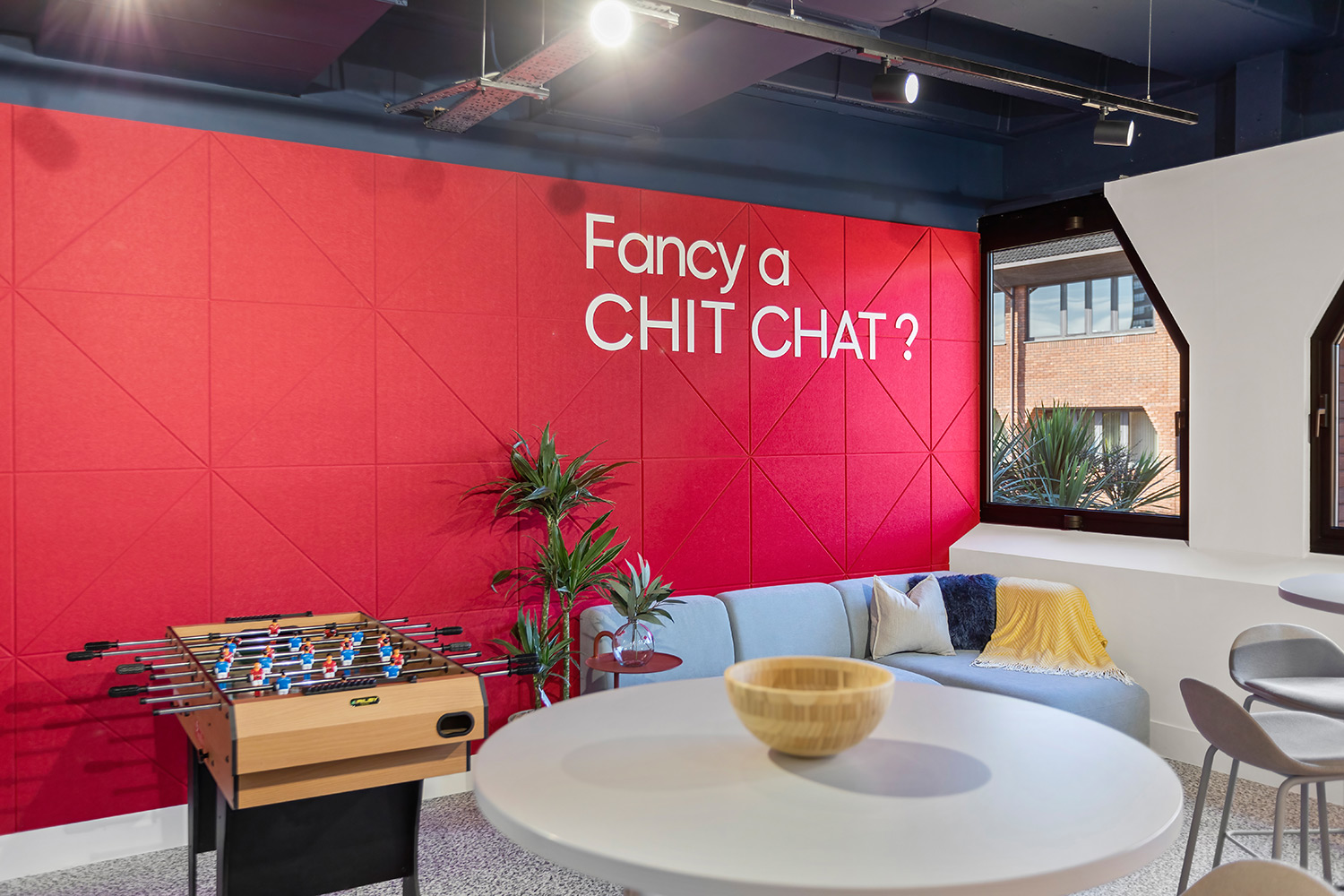Insights
Setting Your Company Culture? Make Sure Your Office Reflects It

A strong company culture is essential for building a motivated and engaged team. But how do you ensure that your office design reflects this culture? The workspace plays a significant role in supporting and even enhancing your company’s values and identity. Let’s explore how office design can align with and promote your business culture.
Reflect Your Brand’s Culture with Office Design

The design of your office space should serve as a visual representation of your company’s values. There’s two main ways to cultivate that sense of culture from the moment employees and clients walk through the door.
1. Colour & Design Schemes to Compliment Your Culture
The colours and decor used in your office can mirror your brand’s personality. For example, using your company’s brand colours in your office design strengthens your identity. A financial services firm might opt for calm, reliable blues, while a creative agency may favour bold, vibrant colours to showcase innovation.
2. Furniture and Layout
Choosing the right office furniture and layout not only conveys your brand image but also defines how your teams interact. Open-plan spaces can represent transparency and collaboration, while private offices may suggest confidentiality and focus. For instance, a legal firm might prefer a more traditional, compartmentalised office design, emphasising discretion.
How to Encourage Collaboration Through Office Design

Encouraging teamwork and communication within the office is a key driver of innovation, productivity, and also a great way to increase how well your junior employees learn and progress. Your office design should reflect this – and this is how:
- Open Plan Spaces for Interaction: Flexible, open spaces create opportunities for spontaneous conversation and idea-sharing. Incorporating communal workstations or breakout areas invites employees to collaborate without the need for formal meetings.
- Collaborative Zones: Designating specific areas for collaboration, such as pods or creative hubs, allows teams to work together more effectively. These spaces should be adaptable, featuring modular furniture that can be reconfigured based on the needs of the moment.
- Balancing Collaboration and Focus: Whilst old-fashioned cubicle style spaces can limit this interaction, office pods are making a comeback as a way to balance open spaces with specific areas designed for focused work.
By blending collaborative and private spaces, your office design supports a culture where teamwork flourishes, but employees also have the space they need to focus and perform at their best.
How to Make Employees Enjoy Their Office Space

We spend a lot of our lives in offices, and so it plays a direct role in employee well-being. Businesses that promote well-being through thoughtful design are more likely to foster a positive company culture.
- Biophilic Design and Natural Features: Incorporating nature into your office, such as through plants, natural light, and water features, can reduce stress and improve mood. This design approach, known as biophilic design, creates a calming atmosphere that supports employee health and creativity.
- Quiet Zones and Wellness Areas: Offering dedicated spaces where employees can take a break, recharge, or manage stress helps promote work-life balance. Providing these quiet spaces shows your team that you care about their mental and physical health, which can boost overall job satisfaction and productivity.
- Ergonomics: Ensuring that your office is equipped with ergonomic furniture is crucial for long-term employee well-being. Adjustable chairs, standing desks, and well-designed workstations can help prevent physical discomfort, allowing employees to work comfortably and efficiently.
An office design that prioritises health not only enhances productivity but also promotes a culture that values its people – in turn, its people value its culture.
Encourage a Culture of Personalisation and Ownership

A key aspect of company culture is how employees engage with their workspace. Allowing personalisation gives employees a sense of ownership, making them feel more connected to the office environment. Three main factors to consider are:
- Customisation within people’s spaces (such as desks)
- Allowing employees to have input on design or layout choices
- Regularly gathering feedback and taking action on it
This contributes to a larger message that the people who work for the company have their say in how the workspace feels. They will start to feel more comfortable in their space, as it reflects their thoughts and feelings. As a result they are more likely to be engaged and motivated, contributing to a stronger company culture.
Design for Your Business’ Goals and Methods

Not every office design fits all business types. The nature of your work should be reflected in the design of your office. Typically this takes the form of either your industry or your working style:
1. Industry-Specific Design
Different industries call for different design approaches. For example, a tech start-up may need an innovative, open-plan office that encourages creativity, which would might not be the right fit for many other companies which may need to focus on high focus areas and privacy.
2. Functional Design for Your Work Style
Whether your business relies on teamwork or individual focus, your office design should support these work styles. For instance, creative or energetic companies may benefit from more casual, dynamic spaces, while businesses that handle sensitive information might prioritise privacy and structure.
Is Your Office Design Aligned with Your Culture?
As companies grow and evolve, it’s easy for office design to fall behind. But a space that no longer reflects your values or work style can harm your company culture. Regularly evaluating and updating your office design can help maintain a workspace that supports your business goals.
If you’re setting out your company goals and culture going forward, get in touch. It might be time for a refresh of your office layout.
Got a project in mind?
Let’s create a plan to achieve your objectives.
Contact us today to learn more about our workplace design, space planning, office fit out services and how we can help you to unlock your office’s full potential.
Let’s create the space to do your best work.


